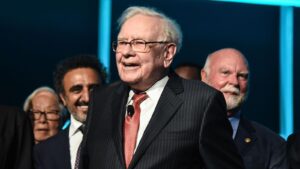Sumeet Salwan, human-capital entrepreneur & Cofounder of CEO.works.
Intel, Boeing, Nike, CVS, Peloton and WeightWatchers: These are among the companies that replaced their CEOs this year—in most cases, unexpectedly.
The rate of departures has hit unprecedented levels. According to the September CEO Turnover Report by Challenger, Gray & Christmas, 1,652 CEOs announced departures so far this year, the highest number since the company started tracking CEO changes in 2002.
Not only has the number of exits increased, but so has the speed of departure. Nearly one-third of CEOs exit by their third year, according to a 2023 Korn Ferry analysis of over 87,000 CEO profiles, and about 11% leave within the first.
It would be easy to blame the outgoing CEO for failing, and perhaps that’s what happened in some cases. Yet, given the rate and number of failures, I think it’s important to examine other underlying issues to avoid repeating the same mistake.
In decades of supporting CEO transitions both as a human resources leader at big multinational companies and now as a founder and entrepreneur, there are a few actions I believe boards and CEOs can take to boost success.
1. Rethink the whole process.
Today’s business environment is changing quicker than ever, yet traditional succession planning continues to function like a slow train to nowhere: An annual parade before the board of “ready now, ready later, ready hopefully” candidates, followed by dinners and meetings with the nomination committee and a years-long curation process for candidates.
Then, when it’s time to find a replacement, the short list of ready-now candidates no longer looks appealing about 70% of the time: Changes hit, value shift and the skills and experience needed at the top look different than when the succession process began. After all, who among us can know today what the business will need in a decade from now?
Instead, I think it’s important to refresh the CEO succession plan every three years by fully and objectively assessing internal and external candidates against evolving business needs. Build a deep understanding of the individuals through direct engagement and discussions with mutual connections. No board member has ever lamented having too much information about the new CEO.
2. Lose the prior person.
Recent situations at Disney and Starbucks are reminders of how tough it is for all involved when the predecessor hangs around in some capacity and gets called back into the role.
This trend has become so commonplace it has a name: The Boomerang CEO. And while it may seem like a good way to maintain continuity, a 2020 MIT Sloan Management study found the stock performance of companies led by boomerang CEOs underperforms that of companies led by first-time CEOs by 10%.
3. On a related but different note, know when it’s time to go.
It’s easy to adopt an “if it’s not broke, don’t fix it” approach. But the downside of staying too long is also well documented. Mandatory retirement ages used to serve as built-in limits to CEO tenure. Today, many companies have scrapped such policies, and those remaining are often overridden to extend CEOs beyond the maximum age.
It’s critical to strike a balance between tenures that are too short or too long. One Harvard Business Review article on CEO performance included Spencer Stuart’s research that tracked year-by-year financial performance over the complete tenures of 747 S&P 500 CEOs. It showed many fall into what’s known as a “complacency trap” from years six through 10—that is, if the person doesn’t get fired first.
Other studies show staying in the role beyond five and seven years can limit objectivity and fresh thinking, causing the entire organization to adjust to the leader’s worldview and ways of working. Cozier relationships with the board also can inhibit independent oversight.
4. Intentionally establish authority.
Becoming CEO doesn’t mean everyone immediately salutes. The wisdom is identifying the moment to establish authority. Wait too long, and people could view a new leader as weak, move too quickly, and risk being perceived as reckless.
During my time at Unilever, our then-new CEO came from our biggest competitor, P&G, the first outsider to helm Unilever in 125 years. He understood the industry and had paid close attention to our business, so he was able to move quickly to address urgent business challenges.
Within a month or so, he suspended quarterly financial guidance, telling Wall Street the company was taking a long-term view. He froze salaries and offered six-month bonuses to keep leaders engaged while he further developed a strategy.
He moved top talent from the “big” jobs of today to “small” ones driving future value. Over a decade, he transformed the company into a more profitable and sustainable company.
5. Manage personal energy levels.
There’s a reason people say it’s lonely at the top. One new CEO recently shared that he had always thought he was a hard worker but was shocked by the intensity of his current workload and schedule.
People had to wait months to get on his calendar. Every meeting topic was wildly different yet important, with each presenting an opportunity to get it right or terribly wrong, making each moment momentous to someone. What a leader says or doesn’t say—posture, facial expressions, how long people are kept waiting—leaders are communicating constantly whether they recognize it or not.
What should new leaders do? Learn to compartmentalize so you can be in the moment. Develop routines to visualize how you will enter and exit each meeting. Request a briefing ahead of time so the topic and asks are clear. Work with an external coach who focuses on corporate athleticism and sustaining high performance.
In the fast-paced, unpredictable world of business, CEO succession is more than just a corporate formality—it’s a critical decision that can make or break a company’s future.
The rate and frequency of turnover demonstrate traditional approaches to planning are no longer enough. To truly succeed, boards and CEOs must embrace a new mindset—one that is proactive, flexible and committed to long-term leadership success.
Forbes Business Council is the foremost growth and networking organization for business owners and leaders. Do I qualify?
Read the full article here











